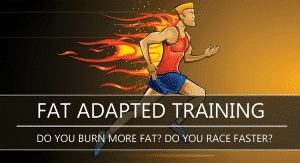Have you ever gotten cramps during a race or workout?
If so, you know how debilitating they can be.
Basketball fans got a memorable example of that during the 2014 NBA finals. In a sweltering-hot arena, star player Lebron James hit the ground after an easy layup, then grimaced and grabbed at his leg, stricken by a cramp. He had to limp off the court, helped by his teammates.
So, what causes exercise-induced muscle cramps? And is there any way to prevent them?
What causes leg cramps?
The traditional explanation for exercise-related leg cramps is that they are the result of dehydration, electrolyte losses, and excessive heat.
However, the evidence for each of these claims is poor.
Part of the reason is that exercise cramps are very difficult to study with the scientific method because they are not easy to reproduce in a laboratory—it’s pretty hard to round up more than a handful of athletes who are prone to cramping, and getting them to all cramp up during the same type of exercise in a lab is even harder.
But, we do know a few things.
It’s likely not hot weather
First, as noted by physiologist and MD Tim Noakes, exercise cramps don’t occur exclusively on hot days.
Even swimmers in very cold water can suffer from muscle cramping, and (again, probably because of the unpredictability of cramps) there’s little high-quality research linking exercise in the heat to an increased risk of cramps.
It’s likely not electrolytes
One way to study cramps is to look at a sample of athletes who are particularly prone to them.
A 2005 study published in the Journal of Athletic Training had 13 college-aged men with a history of calf cramps perform a rigorous and demanding exercise routine designed to fatigue the calves, including toe-walking, jump roping, and calf raises.
The exercises were done in hot, humid conditions, and the routine was performed on two separate days. During one trial, the men were given large volumes of sports drink with extra salt added in, and during the other, no liquids were consumed.
While the salty sports drink allowed some of the men to exercise longer before cramping set in, nine of the 13 men still got cramps even in the sports drink trial
Moreover, in the no-liquid trial, only seven men experienced cramps.
Though the obvious interpretation would be that the sports drinks helped prolong the duration of cramp-free exercise, the authors cautioned that factors other than hydration clearly played a role, given how many of the men cramped up even when drinking large volumes of an extra-salty sports drink.
Probably not hydration either
Another scientific article that examined the role of hydration was published in 2011 by Martin Schwellnus, Nichola Drew, and Malcolm Collins at the University of Cape Town in South Africa. Their study evaluated over 200 Ironman triathletes before and after competing in an Ironman triathlon and attempted to identify factors associated with cramps.
Some 43 athletes developed cramps during the course of the race, but neither body weight changes (which can estimate dehydration levels) nor blood electrolyte levels were correlated with suffering cramps during a race.
Instead, the only two factors linked to cramping were a faster race time and (not surprisingly) a history of cramps in previous races.
Schwellnus’ study was a successor to a smaller and perhaps-overlooked 2004 study on distance runners that used similar methods. Seventy-two runners competing in an ultramarathon were weighed and had blood samples taken before and after the race.
Of these runners, 21 developed cramps.
Like in the later study, electrolyte status and hydration status had no correlation with cramping in these runners.
The neuromuscular theory
In contrast to the traditional mantra of heat, hydration, and electrolytes, the scientific evidence points to a different theory of cramping.
As described by Serajul Khan and John Burne of the University of Sydney in Australia, cramps appear to be the result of the failure of some type of cramp-inhibiting reflex in the spinal column.
Normally, nerves in the tendons of muscles send information back to the spine about the state of the muscle and tendon.
If a cramp were to develop, it should be “shut down” by a reflexive reaction in the spine, which inhibits the muscles that are firing.
Khan and Burne cleverly demonstrated this by artificially inducing calf cramps in volunteers via electrical stimulation, then were able to reverse them by electrically stimulating the Achilles tendon.
This neuromuscular theory of cramping also explains why stretching the affected muscle helps so much—stretching out the muscle sends a stronger inhibitory signal back to the spine, because the nerves in the tendon are sensing the stretch.
Unfortunately, because the discovery of the neuromuscular root of muscle cramps is fairly recent, there’s no good research yet into how you can manipulate this to your advantage to prevent cramps.
Conclusion
Ok, so we’re starting to get at the real reasons why you might be cramping. But we’re not all the way there yet.
Here’s what we do know and what you can put into practice right now:
- We do know that many cramps are caused by overload and fatigue. Here is a look at exactly how and why this happens during the marathon. I am working on a new theory right now about how we can use strength training, specifically what traditional weight lifters call split training, to combat this. Look out for it early August when we re-launch our Strength Training for Runners program.
- Stretching appears to be a good bet once you get a cramp, since it’s been shown to reduce night-time calf cramping.
- Doing plyometric warm-up exercises as part of your training has also been suggested as a possible preventative measure.
Despite conventional wisdom, loading up on electrolytes isn’t going to prevent cramping, and pounding sports drinks to stay hydrated can leave your stomach feeling bloated.
Moreover, drinking more to try to replace electrolytes can mess with your carbohydrate intake and result in taking in too much sugar at one time, causing your stomach to actually slow down the rate it delivers glycogen to your working muscles.
If you do think your cramps might be due to low electrolytes, we would recommend EnduroPacks Electrolyte Spray, as it has zero calories, zero sugar, and can be added to any drink.
So, how can you make sure you get everything right?
What if I told you there was a comprehensive blueprint that takes uses the latest scientific research and makes it simple to calculate YOUR exact, specific fueling needs during the race and then provides an actionable, easy-to-follow prescription for how to practice, carbo-load, taper and execute your exact marathon nutrition strategy?
Luckily, now there is.
With the combined powers of our nutritionist, team doctor, head of running research and marathon coach extraordinaire (yes, we’re kind of like Voltron) we created the first of its kind Marathon Nutrition Blueprint.
This Blueprint calculates for you exactly how much, when, and what products you need to fuel optimally during the race and provides you with specific, actionable information on how to practice during training, carbo-load, taper, and recover.
Are you ready to vanquish the marathon bonk for good? Get Your Marathon Nutrition Blueprint Now





One Response
Do you know of any one publishing a protocol for swimmers nutrition on training and race day ? Thanks.